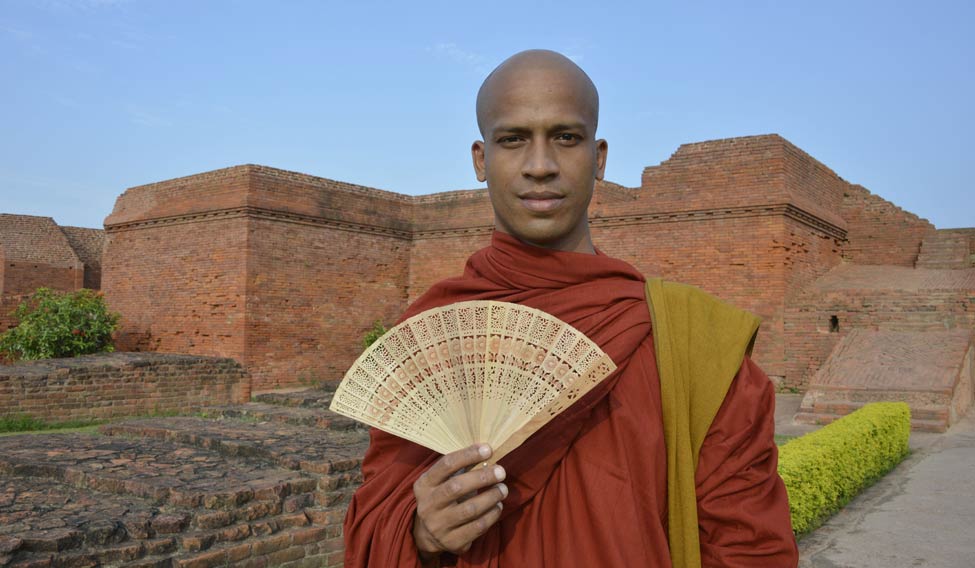A visit to Madhur Bar on the outskirts of Nalanda town would give tourists a fairly good idea of the political mood in Bihar. At sundown, people of the sleepy little town pour into the bar to share their thoughts on politics and drown their sorrows. As the evening rolls into night, extra benches and chairs are laid out in the yard outside to accommodate more clients. As the only public place in Nalanda that encourages debate, Madhur Bar often acts as a base for political mobilisation.
The town is light-years away from Xuanzang’s Nalanda, the erstwhile seat of learning that was dominated by big, open yards of the ancient university and the Buddhist monasteries. Now, it suffers from an acute shortage of public places where people of all opinions could converge and chat. Nalanda’s reputation as a dialogue-based society has diminished, with discussions now limited to the premises of a local watering hole a few kilometres from the relics of the past.
The Nalanda-Rajgir region was once a knowledge empire that attracted thousands of students and teachers from all over the known world. A Chinese Buddhist monk and translator, Xuanzang himself studied there for more than two years.
 Illustration: Bhaskaran
Illustration: Bhaskaran
He visited India between AD 629 and 645. After travelling through northwestern China and central Asia, he came to Punjab and the Gangetic plains, finally reaching Nalanda in 637. In his Travels in the Western Countries, Xuanzang writes that he counts Shilabhadra, a reputable teacher at Nalanda, as one of his guides and masters. He says Shilabhadra asked him to stay at Nalanda for 15 months to study the Yogashastras. Xuanzang apparently agreed and, after completing his studies, travelled to the peninsula and the Brahmaputra plains.
He returned to Nalanda and stayed there for several months, before leaving
with a large collection of gifts―books, antiques and sculptures of Buddhist origin. Back home, he spent the rest of his life translating the Dharmasutras he had brought from Nalanda.
Time has left little of the ancient university and monasteries, the soot-covered ruins of which are still being dug out by the Archaeological Survey of India. Thanks to the state government, the Nalanda-Rajgir region is not totally bereft of its reputation as a centre of education. A medical college, an engineering college and a police training academy are based there. And, despite the poor transport and lodging facilities, tourists continue to throng the place.
Nalanda also seems well on its way to eliminating the difference between its past and present. An international initiative led by Nobel laureate Amartya Sen is trying to build a state-of-the-art university which, hopefully, will put Nalanda back on the global education map. As a start, a white, two-storeyed building has come up ten kilometres from the site of the mahavihara. Much like the ancient university, which ran on donations from neighbouring villages, the new university, too, banks on the charity of its neighbours. At present, Mudaffarnagar, Kubhri and Jatti Bhagwanpur villages have donated land for the project. Anil Chandra Jha, who is guarding the vast premises of the proposed university, says no villager has been displaced because of the project to revive education in the ancient seat of learning.






